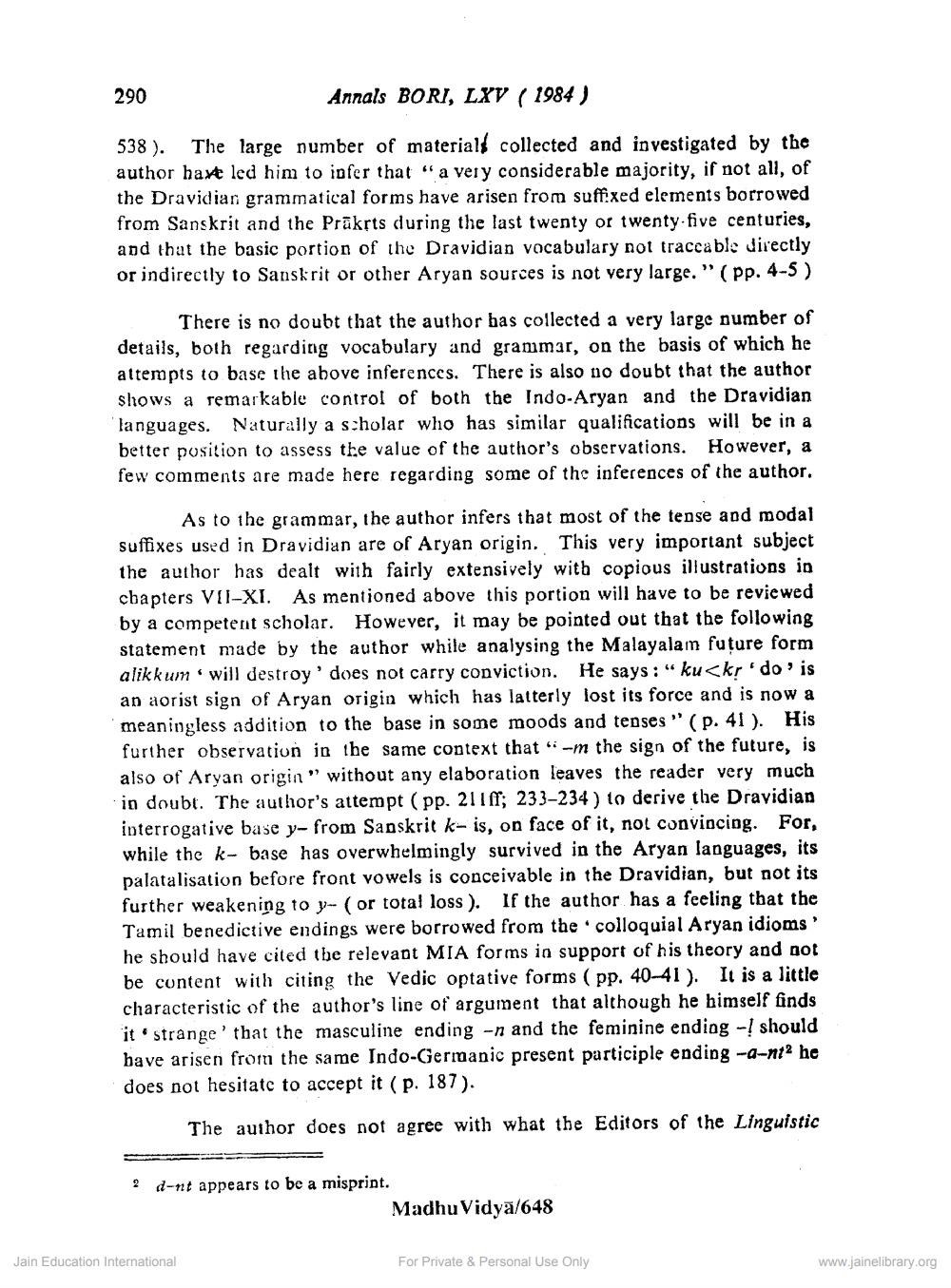________________
Annals BORI, LXV (1984)
538). The large number of material collected and investigated by the author have led him to infer that "a very considerable majority, if not all, of the Dravidian grammatical forms have arisen from suffixed elements borrowed from Sanskrit and the Präkrts during the last twenty or twenty-five centuries, and that the basic portion of the Dravidian vocabulary not traceable directly or indirectly to Sanskrit or other Aryan sources is not very large." (pp. 4-5)
290
There is no doubt that the author has collected a very large number of details, both regarding vocabulary and grammar, on the basis of which he attempts to base the above inferences. There is also no doubt that the author. shows a remarkable control of both the Indo-Aryan and the Dravidian languages. Naturally a scholar who has similar qualifications will be in a better position to assess the value of the author's observations. However, a few comments are made here regarding some of the inferences of the author.
As to the grammar, the author infers that most of the tense and modal suffixes used in Dravidian are of Aryan origin. This very important subject the author has dealt with fairly extensively with copious illustrations in chapters VII-XI. As mentioned above this portion will have to be reviewed by a competent scholar. However, it may be pointed out that the following statement made by the author while analysing the Malayalam future form alikkum will destroy does not carry conviction. He says: "ku<kr 'do' is an aorist sign of Aryan origin which has latterly lost its force and is now a meaningless addition to the base in some moods and tenses" (p. 41). His further observation in the same context that "-m the sign of the future, is also of Aryan origin" without any elaboration leaves the reader very much in doubt. The author's attempt (pp. 211; 233-234) to derive the Dravidian interrogative base y- from Sanskrit k- is, on face of it, not convincing. For, while the k- base has overwhelmingly survived in the Aryan languages, its palatalisation before front vowels is conceivable in the Dravidian, but not its further weakening to y- (or total loss). If the author has a feeling that the Tamil benedictive endings were borrowed from the colloquial Aryan idioms' he should have cited the relevant MIA forms in support of his theory and not be content with citing the Vedic optative forms (pp. 40-41). It is a little characteristic of the author's line of argument that although he himself finds it strange that the masculine ending -n and the feminine ending - should have arisen from the same Indo-Germanic present participle ending -a-nt he does not hesitate to accept it (p. 187).
The author does not agree with what the Editors of the Linguistic
2 d-nt appears to be a misprint.
Jain Education International
Madhu Vidya/648
For Private & Personal Use Only
www.jainelibrary.org




